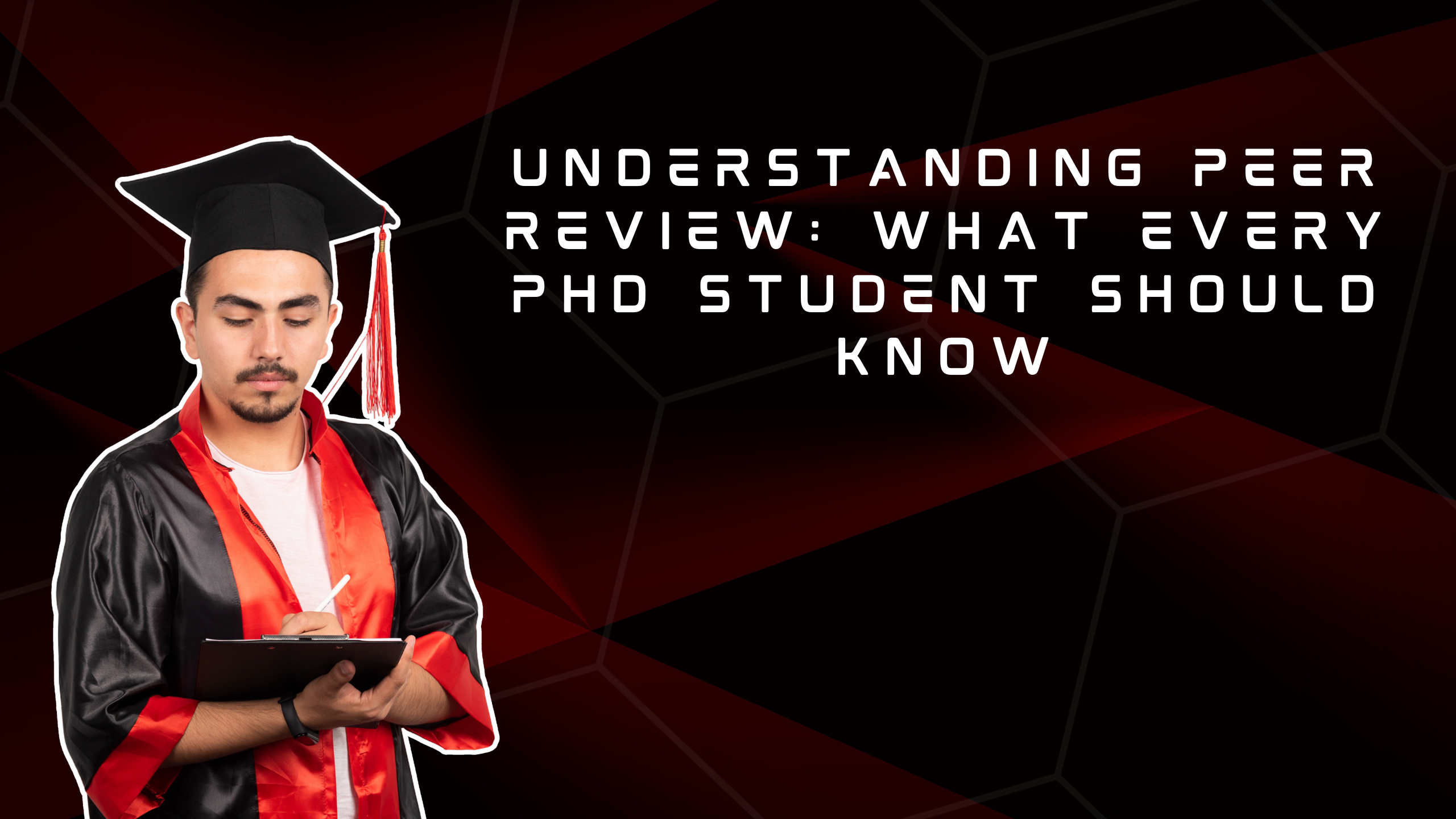Understanding Peer Review: What Every PhD Student Should Know
Kenfra Research - Shallo2025-05-06T14:54:31+05:30Embarking on a PhD journey is a rigorous process filled with research milestones, writing marathons, and academic scrutiny. One critical component that every PhD student should know—and will likely encounter multiple times—is the peer review process. Whether you’re submitting a journal article, a conference paper, or even your dissertation, peer review acts as the gatekeeper to academic credibility. In this blog post, we’ll explore what peer review is, why it matters, how it works, and how you can navigate it successfully. Every PhD student should know that if you’re aiming to publish in Scopus or SCI journals, understanding peer review isn’t just helpful—it’s essential.

What Is Peer Review?
Peer review is a quality-control process used by academic journals and publishers to ensure the validity, originality, and relevance of a manuscript before publication. When you submit your research to a journal, the editor sends it to other researchers in the field—your “peers”—for evaluation.
These reviewers assess:
- The soundness of your methodology
- The significance of your results
- The clarity of your writing
- The novelty and originality of your contribution
- Whether your work aligns with the journal’s scope and audience
Peer review is intended to improve research quality, weed out flawed or unethical studies, and uphold academic integrity.
Types of Peer Review
Understanding the different types of peer review will help you better navigate the process.
- Single-Blind Review
In this model, the reviewers know who the author is, but the author does not know who the reviewers are. This is the most common format but may introduce bias.
- Double-Blind Review
Both the author and reviewers are anonymous to each other. This reduces potential bias and is commonly used in humanities, social sciences, and many Scopus/SCI-indexed journals.
- Open Review
Both parties know each other’s identities. Some journals also publish reviewer comments alongside the article for transparency.
- Post-Publication Review
Here, the article is published first, and the wider academic community evaluates it afterward. Platforms like PubPeer enable this kind of review.
Why Peer Review Matters for PhD Students
For PhD students, especially those targeting top-tier publications, peer review offers numerous benefits:
Academic Validation
Getting published in a peer-reviewed journal is a seal of approval from experts in your field. It demonstrates the credibility of your research.
Feedback for Improvement
Reviewer comments—while sometimes tough—can vastly improve your work and help you develop as a scholar.
Career Advancement
Publications in peer-reviewed journals boost your academic profile, making it easier to secure fellowships, postdocs, or teaching positions.
Fulfillment of PhD Requirements
Many universities require at least one or two peer-reviewed publications before awarding the degree. Understanding this process is non-negotiable.
The Peer Review Process: Step-by-Step
Here’s a typical breakdown of what happens when you submit a paper to a journal:
Step 1: Submission
You upload your manuscript via the journal’s online submission system. Make sure it adheres to the author guidelines.
Step 2: Editorial Screening
The editor checks if the paper fits the journal’s scope and basic quality standards. Around 30-50% of papers are rejected at this stage.
Step 3: Reviewer Assignment
If your paper passes the editor’s desk, it is sent to 2–4 experts in your field for detailed review.
Step 4: Reviewer Reports
Reviewers provide detailed feedback and recommend one of the following:
- Accept as is
- Minor revisions
- Major revisions
- Reject
Step 5: Decision
Based on the reviewers’ recommendations, the editor makes a decision. You’ll receive a letter outlining the comments and next steps.
Step 6: Revision and Resubmission
If revisions are requested, address each comment thoroughly and resubmit with a response letter detailing the changes made.
Step 7: Final Decision
If your revised paper satisfies the reviewers, the editor may accept it for publication.
Common Reviewer Comments (and How to Address Them)
Facing peer review for the first time can feel daunting. Here’s a look at some common reviewer comments and strategies to respond:
Reviewer Concern | What It Means | How to Respond |
“Literature review is insufficient” | You may have missed key studies. | Add recent and relevant references. |
“Unclear methodology” | Your process lacks detail. | Include step-by-step methodology. |
“Results not statistically significant” | Your findings lack strength. | Re-analyze data or better explain limitations. |
“English language needs improvement” | The paper is hard to read. | Consider professional editing or tools like Grammarly. |
“Conclusion not well-supported” | Your conclusion doesn’t match the data. | Reframe conclusions based on findings. |
Always remain respectful in your rebuttal. If you disagree with a comment, explain why with evidence.
Tips to Succeed in Peer Review as a PhD Student
Navigating peer review effectively can greatly increase your publication success. Here are key tips:
- Choose the Right Journal
Don’t submit randomly. Make sure the journal aligns with your topic, scope, and level of innovation. Use journal finder tools or consult with your supervisor.
- Follow Submission Guidelines Strictly
Journals are strict about formatting, reference styles, and word limits. Non-compliance often leads to desk rejection.
- Write a Strong Cover Letter
Highlight the significance of your research, its contribution to the field, and why the journal is the best fit.
- Be Patient and Persistent
Reviews can take weeks or even months. Use this time to work on other parts of your research.
- Learn from Rejection
Rejection is part of the process. Even top researchers get rejected. Use the feedback to improve and resubmit elsewhere.
- Practice Reviewing Papers
Volunteer to review papers if you get the chance. It sharpens your critical thinking and helps you become a better writer.
Peer Review and Predatory Journals: A Warning
PhD students should be wary of predatory journals—publications that claim to be peer-reviewed but skip the process to make quick money. These journals:
- Charge high fees
- Have no legitimate editorial board
- Accept papers without meaningful review
- Can damage your academic reputation
Use resources like Scopus, SCI, or DOAJ to verify the legitimacy of a journal before submission.
Final Thoughts
Understanding the peer review process is crucial for academic success, and every PhD student should know that it’s not just a hurdle to cross; it’s a valuable learning tool that helps refine your research, sharpen your arguments, and establish your credibility in the scholarly community. With the right mindset, careful planning, and perseverance, every PhD student should know how to master the peer review process and turn it into a powerful ally on their PhD journey.
Kenfra Research understands the challenges faced by PhD scholars and offers tailored solutions to support your academic goals. From topic selection to advanced plagiarism checking.







Leave a Reply